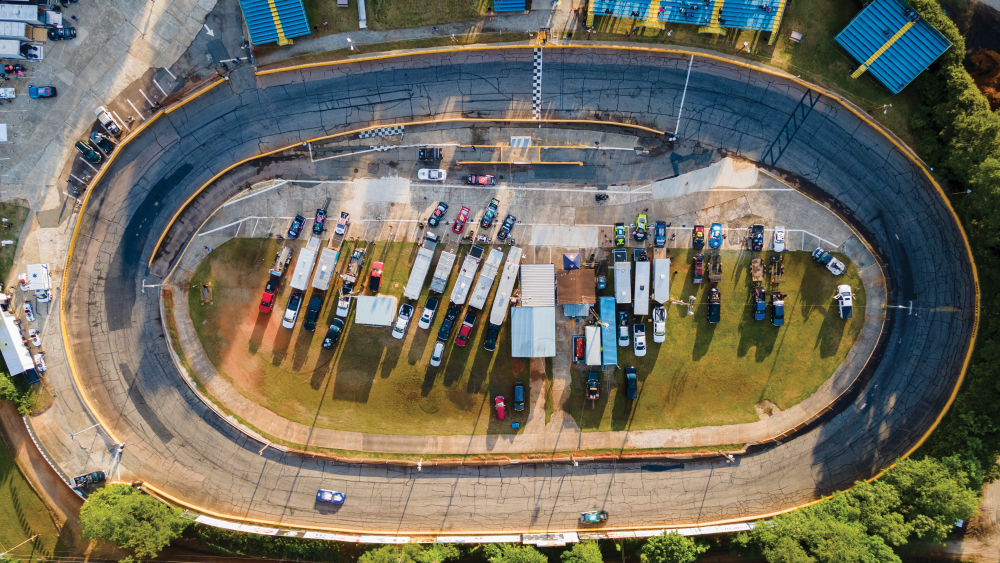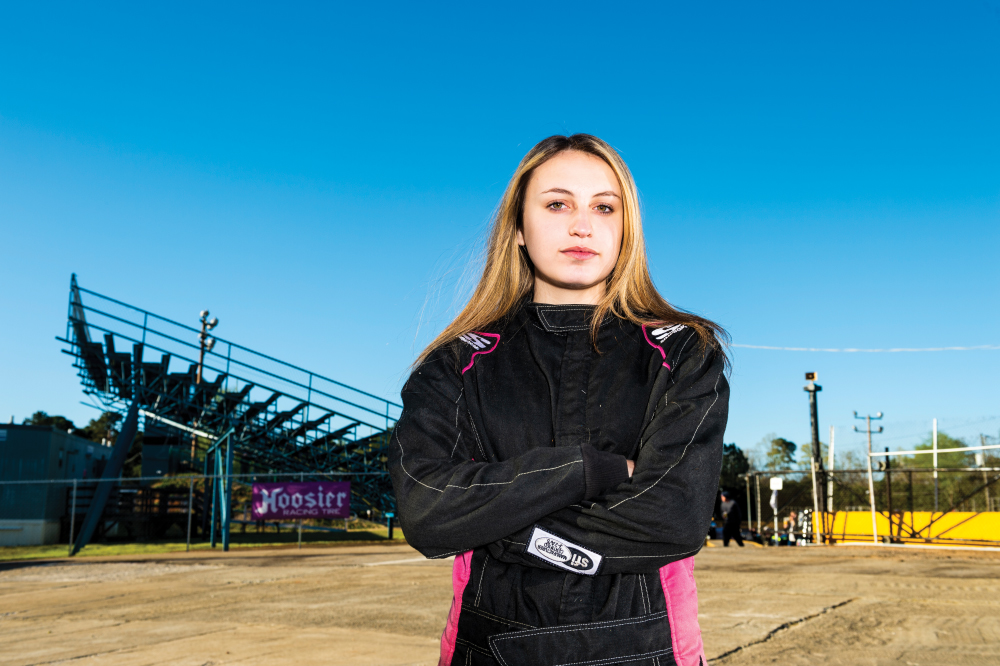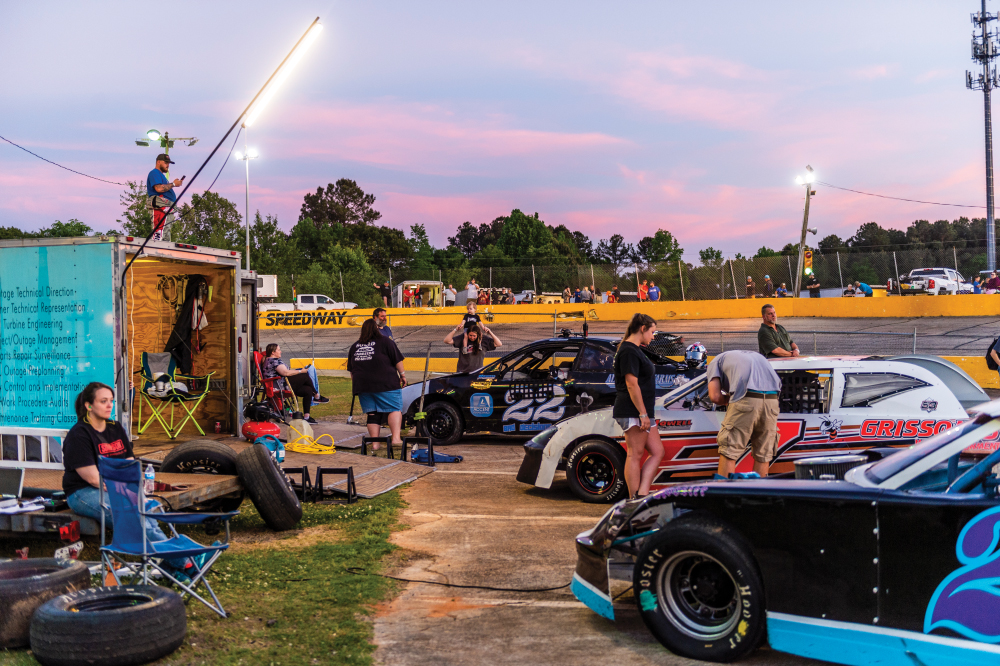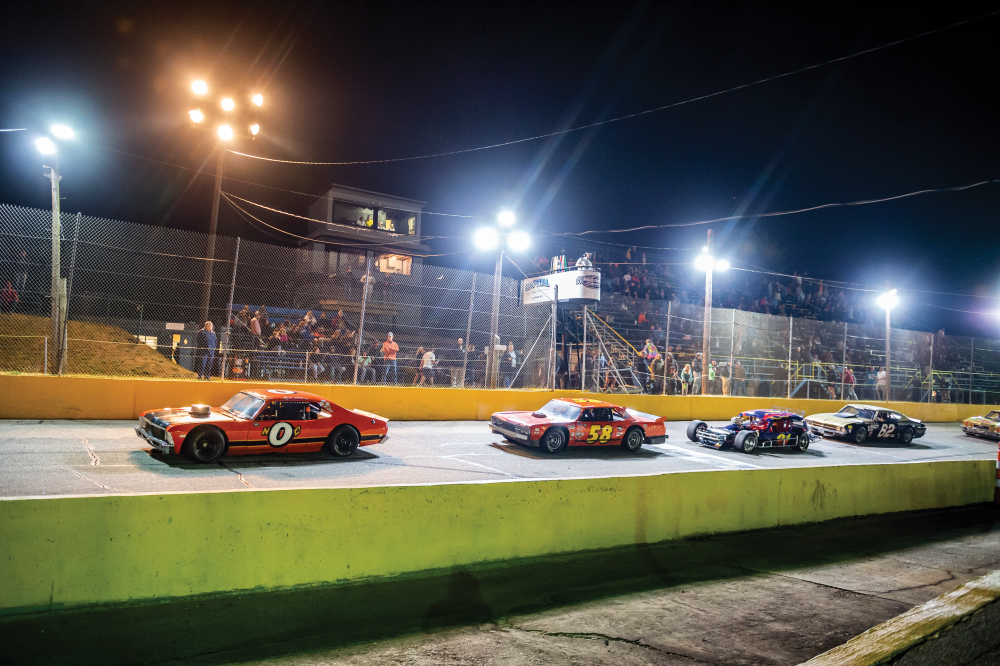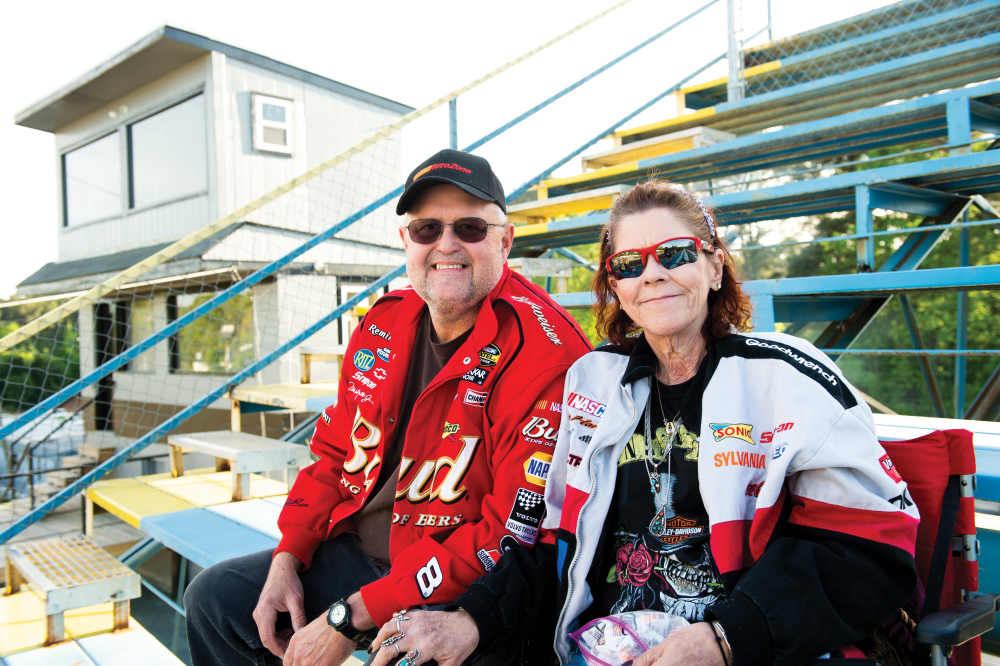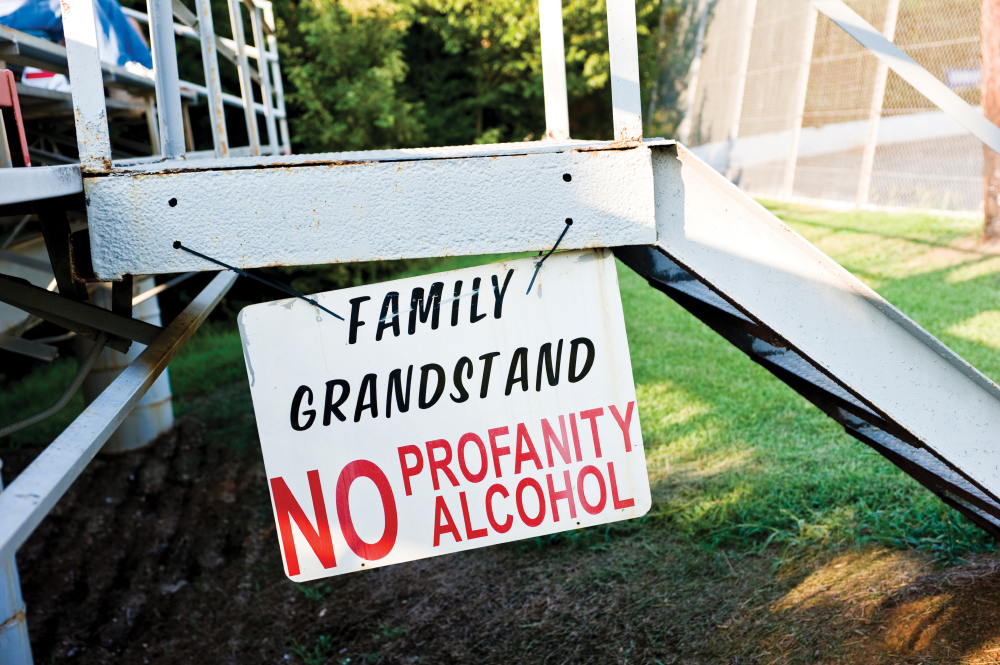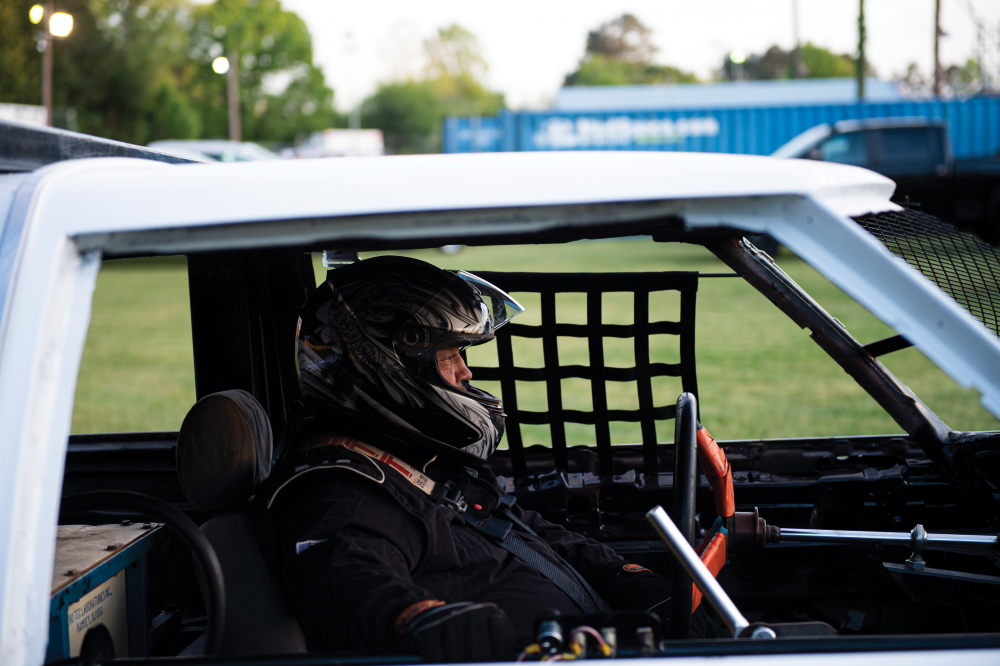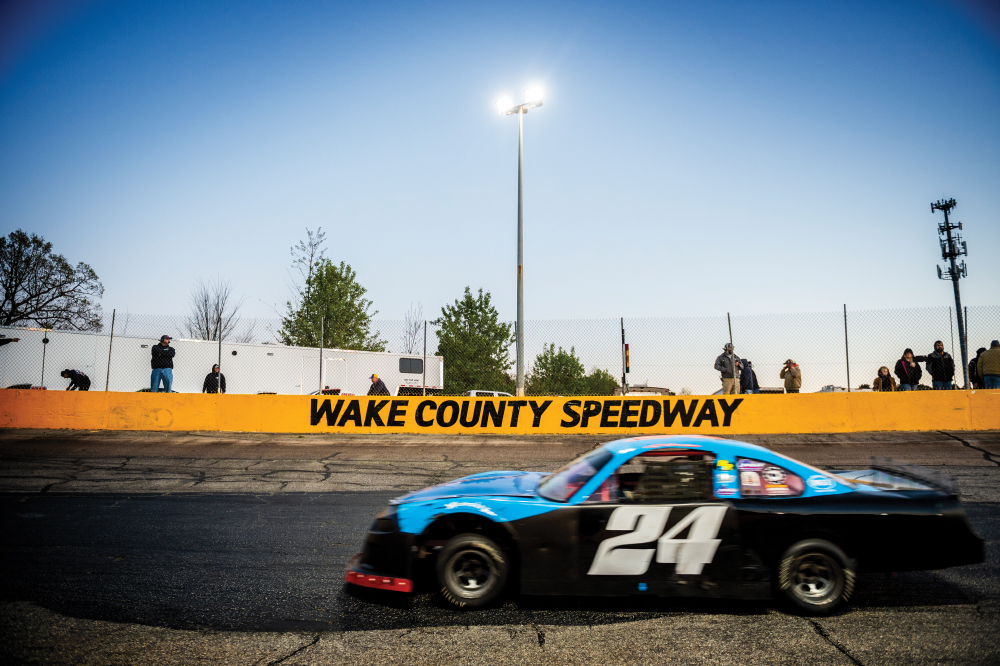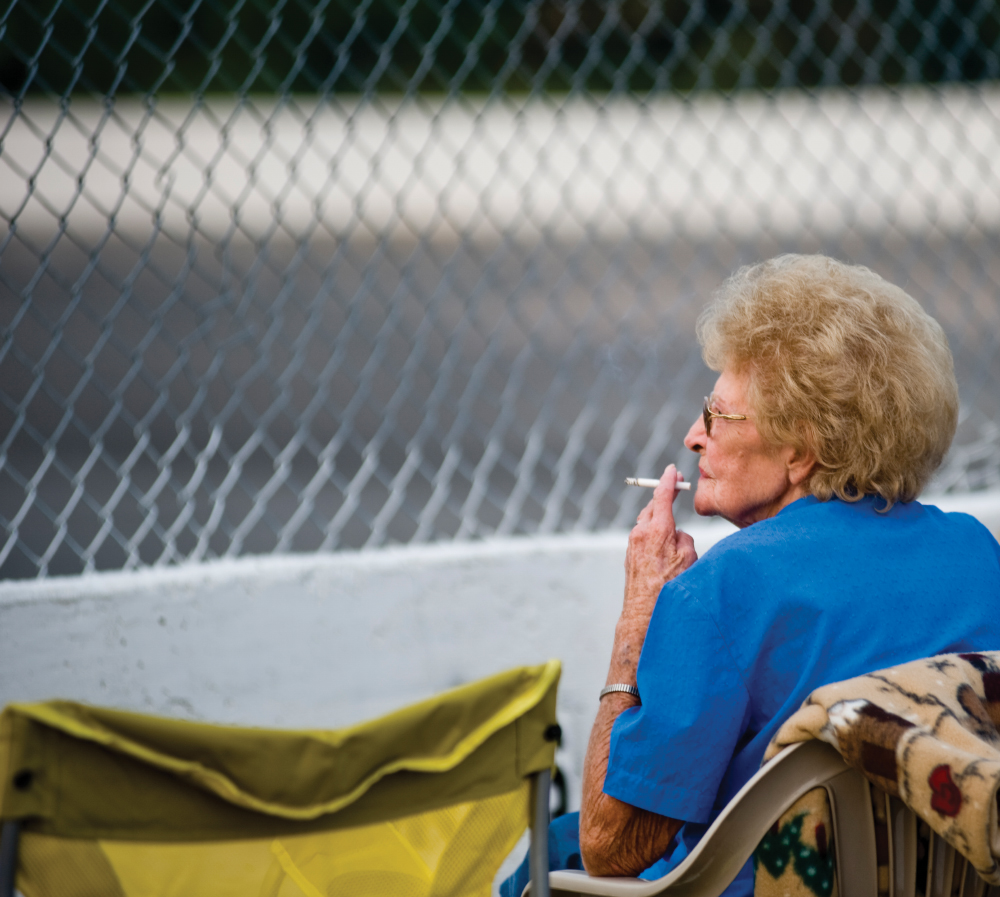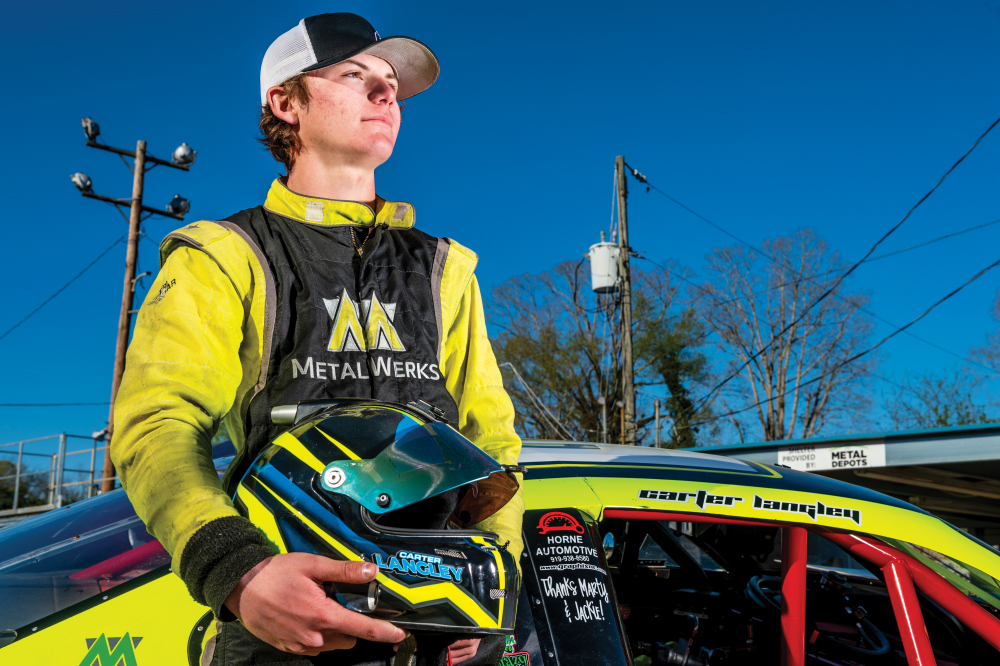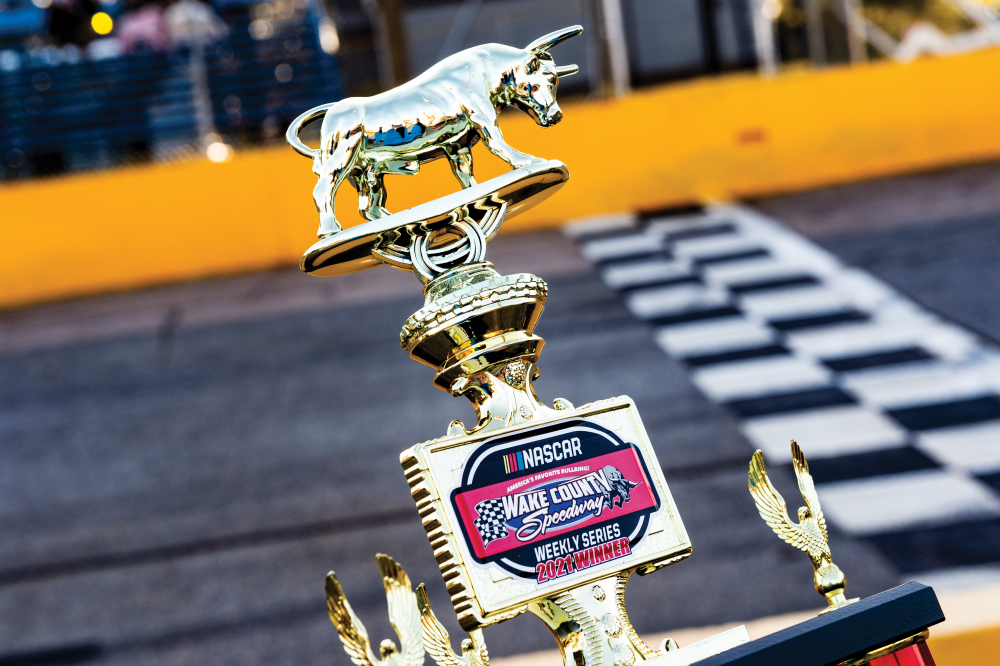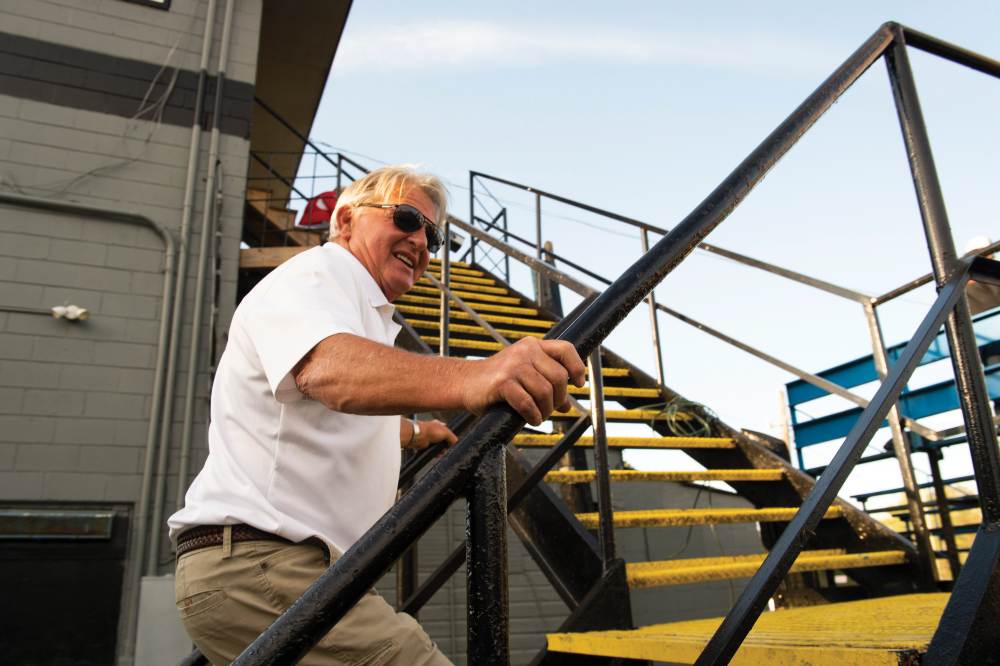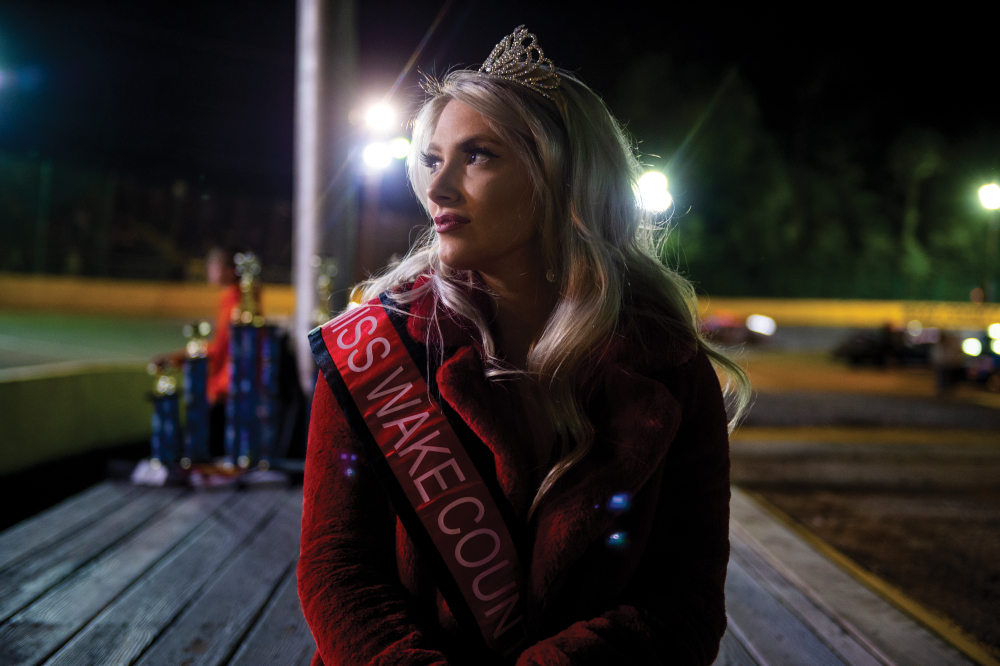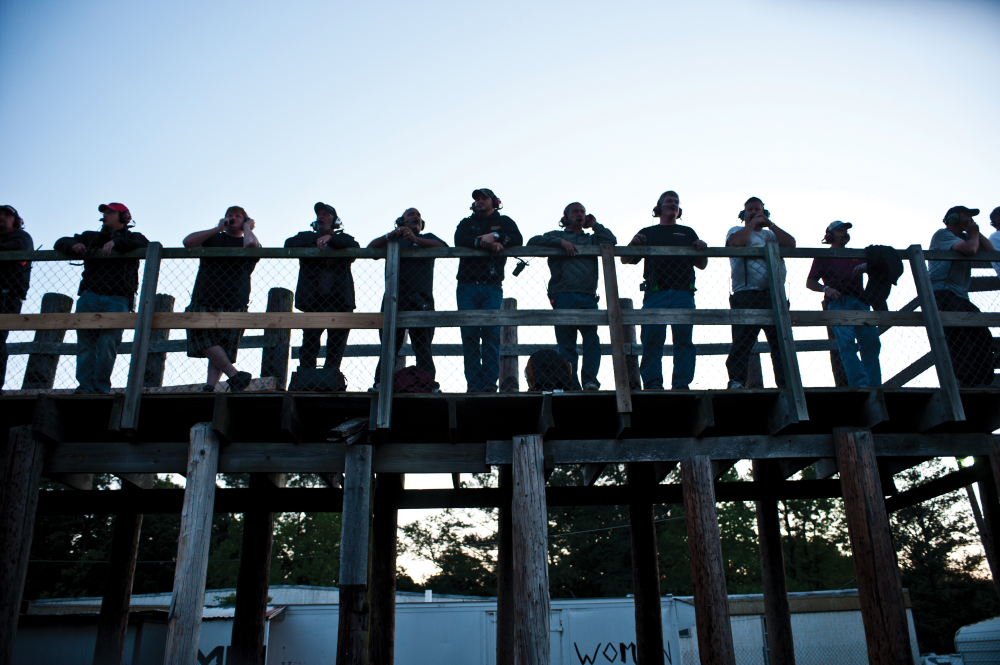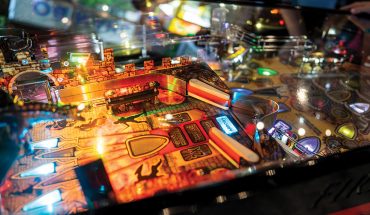Click into a classic pastime, just a few miles outside of Raleigh, at our local NASCAR-sanctioned racetrack.
By Ayn-Monique Klahre | photography by Bryan Regan
A few miles south of downtown off Fayetteville Road, a gravel road leads through a stand of trees. Beyond, a gentle loop leads to a grassy parking lot; metal bleachers loom ahead. The air smells like funnel cake and burnt rubber, and a few bucks get you beyond a chain-link fence.
That’s where you’ll find the Wake County Speedway, a NASCAR-sanctioned track that draws legions of racing enthusiasts to its stands for weekly events, spring through fall. “This is like a playground to me,” says William Brown, the track manager and self-proclaimed “fix-it guy.”
Brown and his team have spent many hours revitalizing the Speedway, which was built in 1962 and still had a dirt track in the 1980s. Particularly over the past year, when they weren’t able to host spectators, they spent their time shoring up the grandstands, repainting the track, installing new lighting, and getting new plumbing into the bathrooms. Brown is the master of getting it done on a budget: the bright yellow bumper at Turn 2, for example, was created from pipes salvaged from a construction site out in Clayton. He and his crew cut the pipes to size, sunk them in place, and filled them with cement to create a new barrier that replaced the “prehistoric” telephone poles that were there before.
As the sun sets, the bleachers fill with families, groups of young folks with cases of beer or coolers in tow, old-timers with stadium seats and blankets to ward off an evening chill. Returning guests match their noise-canceling earmuffs to their outfits; newcomers can buy them at a stand. You can also get soda and a hot dog, fried Oreos, or nachos doused in delicious, neon-orange cheese. “It’s all about family entertainment,” says Brown.
The show begins before the races even start, as groups of cars enter the track for a warm-up loop, then race through time trials to see who will compete. The cars are as varied as the drivers: small-scale Bandoleros, which can be driven by kids as young as eight; Mod-4s (four-cylinder cars geared up for track racing); Legends and Bombers, whose retro chassis have been modified with powerful engines. Some seem just to be seats and frames, powerful exoskeletons around roaring engines. Like the fans, the drivers are young and old, male and female. The Southern Ground Pounders, a vintage racing club, are regular guests, with their own internal rules to race safely.
The official races begin with an invocation and the National Anthem; t-shirts are shot and candy is thrown out for kids. Then it comes: Ladies and gentlemen, start your engines.
The track roars to life; you feel it down to your bones. The noise is deafening, a buzz that pitches and deepens as the cars move around the track. (“These aren’t even the loudest,” Brown laughs.) Thirty loops, or 100, go by in a flash, the cars jockeying for position and always, imminently, on the verge of collision. Sometimes they do — the action pauses as medics and mechanics assess the damage, then it starts again.
It’s thrilling and mesmerizing. You leave humming with energy, trying not to lean too hard on the gas pedal on your way back home.
Photographer Bryan Regan has spent the last 10 years visiting the speedway to capture the people and energy that bring it to life. These are some of his images.
